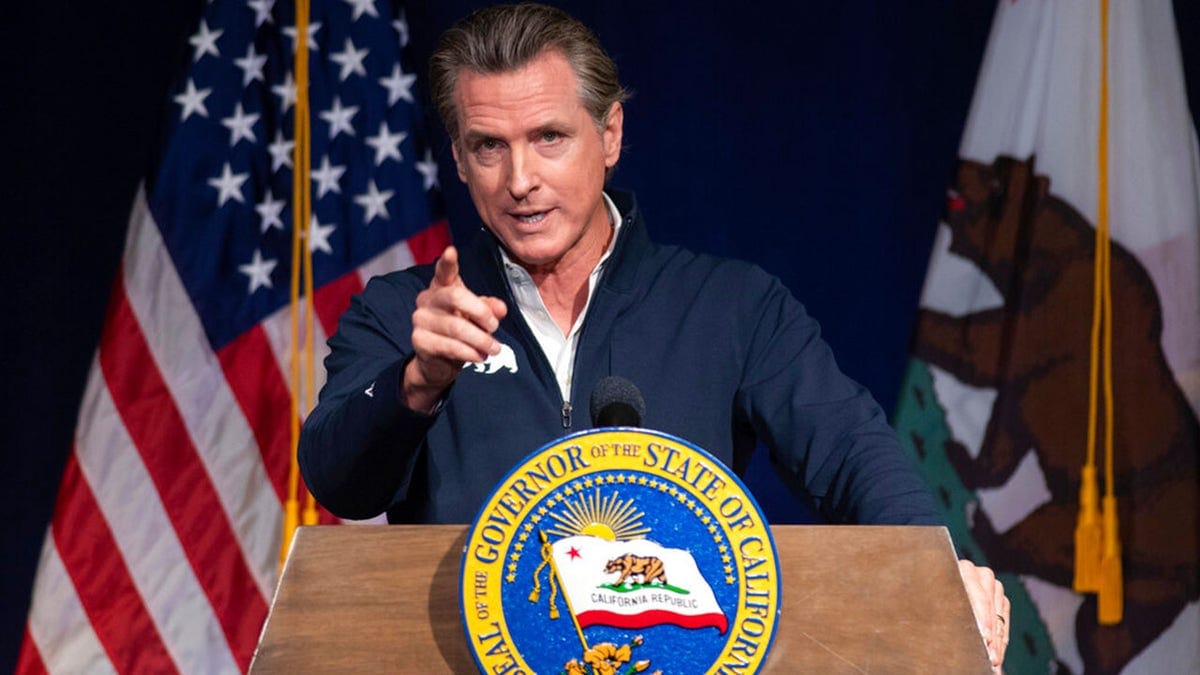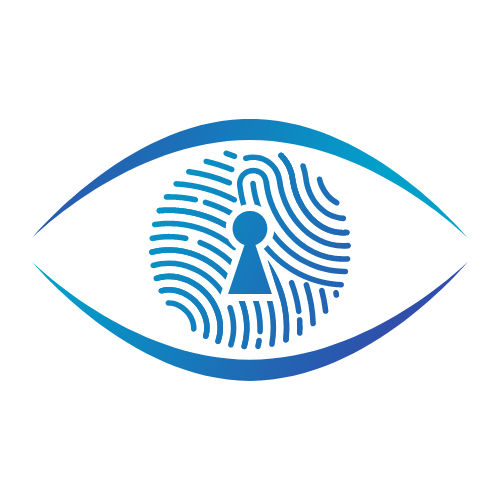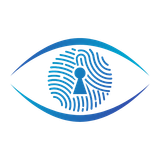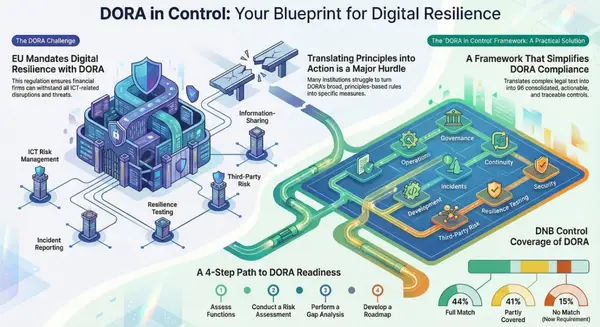California's Tech Surveillance Laws: What Compliance Teams Need to Know About AB 56, SB 243, and AB 1043

California just passed a slate of new tech laws under the banner of "child safety," but they amount to state-mandated surveillance and speech control.
Executive Summary
On October 13, 2025, Governor Gavin Newsom signed into law three sweeping pieces of legislation that fundamentally reshape how technology companies must operate in California. While framed as child protection measures, these laws establish unprecedented government oversight of digital platforms, mandate real-time monitoring of private conversations, and create operating system-level identity tracking systems.
For compliance professionals, these laws represent a significant expansion of regulatory burden with implementation deadlines rapidly approaching. Organizations must act now to assess their exposure and develop compliance strategies.
Key Takeaways:
- AB 56 requires repetitive, government-mandated mental health warnings on social media platforms (effective January 2027)
- SB 243 forces AI chatbot operators to surveil conversations for mental health concerns and report to the state (effective January 2026)
- AB 1043 mandates age verification at the operating system level, creating device-tied identity tracking (effective January 2027)
- While SB 771 was vetoed, its attempted algorithmic liability framework signals future regulatory direction
AB 56: Government-Mandated Content Labels on Social Media
What the Law Requires
Assembly Bill 56, known as the Social Media Warning Law, represents an unprecedented intrusion into platform content by requiring "covered platforms" to display black-box style warnings similar to cigarette packaging. The law applies to any platform meeting the definition of an "addictive internet-based service or application" under California's Protecting Our Kids from Social Media Addiction Act.
Specific Requirements:
- Initial Access Warning: When users under 17 first access the platform each day, display a warning for at least 10 seconds covering at least 25% of the screen (can be skipped by user)
- Three-Hour Warning: After 3 hours of cumulative active use, display a warning for at least 30 seconds covering at least 75% of the screen (cannot be skipped)
- Hourly Warnings: Repeat the 30-second, unskippable warning every hour thereafter
Mandated Message: "The Surgeon General has warned that while social media may have benefits for some young users, social media is associated with significant mental health harms and has not been proven safe for young users."
Compliance Implications
The law raises several critical compliance challenges:
Technical Implementation: Platforms must develop systems to:
- Accurately determine user age ("reasonably determined" to be under 17)
- Track cumulative active use time across sessions
- Display warnings that cannot be bypassed after the three-hour threshold
- Ensure warnings occupy the required screen percentages
First Amendment Concerns: The law compels platforms to display government-authored messages on what is fundamentally a communications medium. While the law includes findings justifying the warnings based on a 2023 U.S. Surgeon General advisory, First Amendment challenges are likely, particularly given that the warnings appear on all content regardless of its nature.
Exemptions: The law does not apply to platforms whose "primary function" is direct messaging where communications are only viewable by sender and intended recipient, with no public content dissemination.
Enforcement: The California Attorney General can seek injunctions and civil penalties. Notably, the law explicitly provides no private right of action.
Compliance Timeline
- Effective Date: January 1, 2027
- Action Required: Platforms should begin technical scoping immediately to determine implementation costs and timelines
For organizations already complying with similar legislation in Minnesota (which became the first state to pass such a law earlier in 2025), some infrastructure may be adaptable, though California's requirements differ in key respects.
Related analysis: California's 2025 Privacy and AI Legislative Landscape: Eight Bills Navigate Complex Path Forward
SB 243: Mandated Surveillance of AI Chatbot Conversations
What the Law Requires
Senate Bill 243 represents the nation's first comprehensive regulation of AI "companion chatbots"—systems designed to provide "adaptive, human-like responses to user inputs" and meet users' "social needs." The law imposes sweeping monitoring requirements on chatbot operators.
Core Requirements:
Crisis Prevention Protocols:
- Operators must implement protocols preventing chatbots from producing content related to suicidal ideation, suicide, or self-harm
- When users express such concerns, chatbots must provide notifications referring users to crisis service providers (suicide hotlines, crisis text lines)
- Operators must publish their crisis prevention protocols on their websites
Content Restrictions for Minors:
- Prevent chatbots from producing visual material depicting sexually explicit conduct
- Prevent chatbots from directly stating that minors should engage in sexually explicit conduct
- Implement reasonable measures to ensure compliance
Disclosure Requirements:
- Clear and conspicuous notice that users are interacting with AI (repeated every 3 hours for minors)
- Prohibition on chatbots representing themselves as healthcare professionals
- Age verification mechanisms
- Mandatory break reminders every 3 hours for minors
Annual Reporting to State: Beginning July 1, 2027, operators must submit annual reports to the California Department of Public Health's Office of Suicide Prevention detailing:
- Total number of instances where users expressed suicidal ideation, suicide, or self-harm to the chatbot
- Number of times the chatbot brought up topics of suicidal ideation, suicide, or self-harm without user prompting
- How evidence-based methods were used to measure suicidal ideation
Private Right of Action: Unlike many California tech regulations, SB 243 includes a private right of action allowing individuals who suffer injury to pursue:
- Actual damages (minimum $1,000 per violation)
- Reasonable attorney's fees and costs
- Injunctive relief
Compliance Implications
Real-Time Surveillance Infrastructure: To comply with the detection and response requirements, companies must implement systems that:
- Monitor conversations in real-time for specific keywords and context
- Analyze sentiment and intent to detect suicidal ideation
- Trigger automated responses and crisis referrals
- Log interactions for annual reporting
This represents a fundamental shift from privacy-protective design to surveillance-by-default for mental health monitoring.
Definition of "Companion Chatbot": The law defines these narrowly as AI systems providing adaptive responses and capable of meeting users' social needs. Notably exempt are:
- Customer service bots
- Video game characters with limited dialogue trees
- Voice-activated virtual assistants without sustained relationship capabilities
- Purely transactional AI tools
Data Privacy Tensions: The monitoring requirements create immediate tension with privacy regulations. To detect self-harm signals, chatbots must process highly sensitive user content. Key questions remain unanswered:
- What data retention periods are acceptable?
- How is user consent obtained and documented?
- How does this interact with the California Consumer Privacy Act (CPRA)?
- What security measures are required for this sensitive data?
Evidence-Based Detection: The requirement to use "evidence-based methods for measuring suicidal ideation" suggests operators cannot simply rely on basic keyword matching but must implement clinically validated detection systems—a significant technical and liability challenge.
Industry Impact
The law has received mixed reactions:
- OpenAI praised it as a "meaningful move forward" for AI safety standards
- Character.AI stated it "welcomes working with regulators" and will comply
- TechCrunch reported companies like Meta, OpenAI, Character.AI, and Replika are all directly impacted
Senator Steve Padilla, the bill's author, framed it as creating "the bedrock for further regulation as this technology develops"—signaling that more expansive requirements may follow.
Compliance Timeline
- Effective Date: January 1, 2026
- First Annual Report Due: July 1, 2027
- Action Required: Immediate assessment of whether systems fall within the definition; development of detection and crisis response protocols
For context on California's broader AI regulatory approach: The State of California Leads the Way in AI and Privacy Legislation: A Comparative Look at Global AI Regulation Efforts
AB 1043: Operating System-Level Age Verification and Identity Tracking
What the Law Requires
Assembly Bill 1043, dubbed the "Digital Age Assurance Act," goes beyond app-level age verification to require operating system providers themselves to collect and share age data. This represents a fundamental shift in how age verification is implemented, moving it to the device level rather than the application level.
Operating System Provider Requirements:
Account Setup Interface:
- Provide an accessible interface at account setup requiring account holders to indicate the birth date, age, or both, of the device user
- The "account holder" must be either an adult (18+) or a parent/legal guardian of a minor
Age Signal Transmission:
- Provide developers with a digital signal via "reasonably consistent real-time application programming interface" (API)
- Signal indicates whether user falls into specific age brackets:
- 12 and under
- 13-15
- 16-17
- 18 and over
Developer Requirements:
- Must request age signals from operating system providers or covered application stores when applications are downloaded and launched
- Must take action based on these age signals as appropriate for their service
Compliance Implications
Unprecedented Scope: Unlike age verification laws in Texas and Utah (which focus on app stores), AB 1043 reaches:
- Operating systems on smartphones
- Tablets
- Personal computers
- Any general-purpose computing device
This means companies like Apple (iOS, macOS), Google (Android, ChromeOS), and Microsoft (Windows) must fundamentally restructure their account setup processes.
Data Privacy Concerns: The law creates a detailed tracking mechanism where:
- Birth dates or ages are collected at the operating system level
- This information is tied to device identity
- Age bracket data is shared with potentially hundreds of app developers
- A comprehensive record of age-based app access is created
Anti-Competitive Provisions: The law explicitly prohibits operating system providers from:
- Using data collected from third parties "in an anticompetitive manner"
- Competing against third parties using this data
- Giving preference to their own services relative to third parties
Good Faith Safe Harbor: The law provides that operators making "good faith effort to comply," considering "available technology and any reasonable technical limitations or outages," shall not be liable for:
- Erroneous signals indicating user age range
- Conduct by developers who receive age signals
Implementation Timeline
- Effective Date: January 1, 2027
- Implementation Deadline: July 1, 2027 (operating system providers must have account setup systems in place)
- Developer Requirement: July 1, 2027 (app developers must begin requesting age signals)
Penalties:
- Negligent violations: Up to $2,500 per affected child
- Intentional violations: Up to $7,500 per affected child
- Enforcement by California Attorney General only
Technical Challenges
Operating system providers face significant engineering challenges:
- Designing user interfaces that balance ease of use with accuracy
- Creating secure APIs for age signal transmission
- Ensuring signals are transmitted in real-time without degrading performance
- Managing age data across device upgrades and account transfers
- Coordinating with potentially thousands of app developers
For developers, the challenge is determining how to act on age signals—what restrictions to impose for different age brackets varies widely by application type and carries significant liability risk if implemented incorrectly.
SB 771: The Veto That Signals Future Direction
What the Bill Would Have Done
While Governor Newsom vetoed Senate Bill 771, its attempted passage—and the reasoning behind the veto—provide critical insights for compliance professionals monitoring California's regulatory trajectory.
SB 771 sought to hold social media platforms with annual gross revenues exceeding $100 million liable if their algorithms aided, abetted, or conspired in civil rights violations, hate crimes, or harassment.
Proposed Penalties:
- Intentional/knowing/willful violations: Up to $1,000,000 per violation
- Reckless violations: Up to $500,000 per violation
- Penalties doubled if victim was a minor
Novel Legal Theory: The bill declared that platforms have "actual knowledge" of how their algorithms operate and interact with every user, effectively creating a presumption of knowledge for liability purposes.
Why It Was Vetoed
In his veto message, Newsom stated: "I am concerned, however, that this bill is premature. Our first step should be to determine if, and to what extent, existing civil rights laws are sufficient to address violations perpetrated through algorithms. To the extent our laws prove inadequate, they should be bolstered at that time."
This language is critical: Newsom did not reject the concept of algorithmic liability—he called it "premature" and indicated that if existing laws prove "inadequate," they should be "bolstered."
Compliance Significance
First Amendment and Section 230 Concerns: The Foundation for Individual Rights and Expression (FIRE) noted the bill would have:
- Created liability for user-generated content based on algorithmic distribution
- Forced platforms to suppress controversial speech to avoid penalties
- Effectively circumvented Section 230 of the Communications Decency Act
Diverse Opposition: The unusual coalition opposing SB 771 included:
- Tech industry groups (Computer & Communications Industry Association, TechNet)
- Civil rights organizations (American-Arab Anti-Discrimination Committee)
- Free speech advocates (FIRE)
- The U.S. Chamber of Commerce
- Anti-war groups (Code Pink)
Future Risk: The veto does not eliminate the threat. California may:
- Commission studies on "algorithmic harms"
- Develop revised versions of the bill addressing constitutional concerns
- Create regulatory frameworks that achieve similar ends through different mechanisms
For more on the potential trajectory: California SB 771: What Social Media Platforms Need to Know About the Pending Civil Rights Liability Law
Broader Context: California's Regulatory Momentum
These three laws are part of a larger package of child safety and AI regulations signed by Governor Newsom in October 2025:
Additional Measures Signed:
- SB 50: Connected devices – device protection requests
- SB 53: Requirements for large AI model developers regarding transparency and safety protocols
- SB 361: Data broker regulations – data collection and deletion requirements
- SB 446: Data breach customer notification enhancements
- SB 524: Law enforcement agencies' use of artificial intelligence
- Deepfake Pornography Penalties: Expanded civil relief up to $250,000 per action for victims
- Cyberbullying Policy: California Department of Education must adopt model policy by June 1, 2026
National Trend Toward State-Level Regulation
California joins a growing number of states imposing proactive safeguards:
- Minnesota: First state to pass social media warning label requirements (applies to all users, not just minors)
- Texas: Age verification requirements for app stores (effective January 1, 2026)
- Utah: Similar app store accountability requirements (effective May 6, 2026)
- Illinois, Nevada, Utah: Restrictions on AI chatbots as substitutes for licensed mental health care
Compliance Action Items
Immediate Actions (Q4 2025)
For Social Media Platforms:
- Conduct gap analysis against AB 56 requirements
- Assess age determination capabilities and accuracy
- Develop technical specifications for warning display systems
- Evaluate whether platform qualifies for exemptions (e.g., direct messaging only)
- Estimate implementation costs and resource requirements
For AI Chatbot Operators:
- Determine if service meets "companion chatbot" definition
- Assess current content moderation and safety systems
- Identify technical approach for real-time mental health monitoring
- Develop crisis intervention protocols and partnerships with crisis service providers
- Design age verification and break reminder systems
- Prepare data privacy impact assessment for surveillance requirements
For Operating System Providers:
- Design account setup interface modifications
- Develop age bracket signal API specifications
- Create developer documentation for API integration
- Assess anti-competitive compliance requirements
- Establish age data security and retention policies
Short-Term Actions (Q1-Q2 2026)
For All Covered Entities:
- Implement SB 243 compliance measures (effective January 1, 2026)
- Conduct user testing of new interfaces and systems
- Train customer support teams on new requirements
- Update privacy policies and terms of service
- Establish monitoring systems for ongoing compliance
- Develop reporting infrastructure for state submissions
Medium-Term Actions (2026-2027)
For Social Media and Operating System Providers:
- Complete AB 56 and AB 1043 implementation (effective January 1, 2027)
- Conduct compliance audits
- Prepare for Attorney General enforcement activity
- Monitor for additional legislative developments
- Track court challenges and their outcomes
Strategic Considerations
Multi-State Compliance: Organizations must consider:
- How to handle conflicting state requirements
- Whether to implement California-style requirements nationwide
- Cost-benefit analysis of geo-fencing vs. universal application
Litigation Risk: Early adopters should expect:
- Constitutional challenges to these laws
- Regulatory enforcement actions as agencies interpret requirements
- Private lawsuits under laws with private rights of action (especially SB 243)
Stakeholder Communication: Prepare messaging for:
- Users concerned about privacy implications
- Investors and board members regarding implementation costs
- Advocacy groups on both sides of the child safety debate
Constitutional and Legal Challenges to Monitor
First Amendment Issues
Compelled Speech (AB 56): The requirement that platforms display specific government messages raises compelled speech concerns. Courts have historically applied strict scrutiny to such requirements, particularly when applied to media companies.
Content-Based Restrictions: To the extent these laws require different treatment of content based on its subject matter (e.g., mental health topics in chatbots), they may face heightened constitutional scrutiny.
Section 230 Preemption
Federal law provides that "No provider or user of an interactive computer service shall be treated as the publisher or speaker of any information provided by another information content provider." These California laws attempt to create state-level obligations that may conflict with this federal immunity.
Privacy Law Conflicts
The data collection and sharing requirements may conflict with:
- California Consumer Privacy Act (CCPA/CPRA)
- Children's Online Privacy Protection Act (COPPA)
- State data minimization principles
Vagueness Challenges
Terms like "reasonably determined," "companion chatbot," and "social needs" may be challenged as unconstitutionally vague, particularly given the significant penalties attached to violations.
Industry-Specific Guidance
Social Media Platforms
Primary Compliance Focus: AB 56 (warning labels)
Key Risks:
- Age misidentification leading to unnecessary warnings or missed warning requirements
- User experience degradation driving users to non-compliant competitors
- Constitutional litigation costs
Recommended Approach:
- Leverage existing age estimation technologies (already deployed for COPPA compliance)
- Consider partnering with industry peers to develop standardized implementation
- Maintain detailed documentation of "reasonable determination" methodologies for age assessment
AI Companies (LLMs and Chatbots)
Primary Compliance Focus: SB 243 (chatbot surveillance)
Key Risks:
- False positives in mental health detection leading to over-reporting
- False negatives resulting in liability under private right of action
- Privacy concerns from real-time monitoring
- Data breach of highly sensitive mental health information
Recommended Approach:
- Engage clinical psychologists and suicide prevention experts in protocol design
- Implement robust data security measures for mental health monitoring data
- Develop clear documentation of "evidence-based methods" for detection
- Consider insurance products for mental health-related liability
Operating System Providers
Primary Compliance Focus: AB 1043 (age verification signals)
Key Risks:
- Inaccurate age data leading to penalties ($2,500-$7,500 per affected child)
- Anti-competitive claims from app developers
- User backlash over mandatory age disclosure
- API availability and reliability issues
Recommended Approach:
- Design flexible age data collection that can adapt to evolving requirements
- Create transparent appeal processes for age disputes
- Establish developer relations team specifically for age signal support
- Document good faith compliance efforts to leverage safe harbor provisions
App Developers
Primary Compliance Focus: AB 1043 (age signal integration)
Key Risks:
- Liability for inappropriate age-based restrictions
- Technical integration challenges with multiple operating systems
- Determining appropriate age-based limitations for specific app categories
Recommended Approach:
- Begin integration planning with operating system providers immediately
- Develop clear age-appropriateness policies for your specific application
- Consider industry standards and best practices for age-based restrictions
- Document compliance methodology thoroughly
Privacy-First Alternatives and Best Practices
Despite the surveillance-heavy nature of these laws, compliance can be achieved while maintaining strong privacy protections:
Privacy-Preserving Age Verification
Rather than collecting and storing precise birthdates:
- Use age estimation technology that doesn't require identity disclosure
- Implement zero-knowledge proof systems where age is verified without revealing birthdate
- Minimize data retention periods for age information
Mental Health Monitoring with Minimal Surveillance
Rather than logging full conversation transcripts:
- Use on-device processing where possible
- Implement privacy-preserving machine learning models
- Aggregate data at the earliest possible stage
- Limit human review to flagged interactions only
User Control and Transparency
- Provide clear disclosure of what data is collected and why
- Give users control over break reminders and warning frequencies where legally permissible
- Implement data deletion requests promptly
- Conduct regular privacy impact assessments
Looking Ahead: California's Regulatory Trajectory
Likely Next Steps
Based on legislative patterns, expect California to:
- Expand Age Verification Requirements: AB 1043 may serve as a template for broader age verification across more services beyond app stores
- Strengthen AI Oversight: SB 243's companion chatbot regulations likely represent the first phase of more comprehensive AI safety requirements
- Revisit Algorithmic Liability: Despite the SB 771 veto, expect revised versions that address constitutional concerns while achieving similar policy goals
- Create Enforcement Infrastructure: California may establish dedicated regulatory bodies for digital platform oversight
Federal Preemption Risk
As state-level regulations proliferate, pressure for federal legislation increases. Potential scenarios:
- Federal AI safety standards that preempt state laws
- Congressional action on Section 230 reform
- Federal age verification framework
- Privacy legislation that supersedes state requirements
International Implications
California's regulations often inspire international action:
- European Union already has comprehensive age verification and AI regulations (AI Act, Digital Services Act)
- Other U.S. states closely watch California for regulatory models
- International companies must consider California requirements as de facto global standards given the state's market size
Conclusion: Compliance in the Age of Digital Surveillance
The passage of AB 56, SB 243, and AB 1043 represents a fundamental shift in California's approach to technology regulation. What began as discrete child safety measures has evolved into a comprehensive framework of government-mandated surveillance, content control, and identity tracking.
For compliance professionals, several realities are clear:
- The regulatory burden is substantial: Implementation will require significant technical investment, ongoing monitoring, and dedicated compliance resources
- Privacy tensions are unresolved: These laws create direct conflicts with privacy-protective principles, requiring careful balancing
- Constitutional challenges are inevitable: Budget for litigation support and monitor court developments closely
- This is just the beginning: California's regulatory momentum shows no signs of slowing, and these laws provide a template for future expansion
- Multi-jurisdictional complexity is increasing: As other states follow California's lead, compliance costs will compound
Strategic Recommendations:
- Begin implementation planning immediately: Even with 2026-2027 effective dates, the technical lift is significant
- Engage with regulators proactively: Help shape implementation guidance and interpretations
- Document everything: Detailed compliance documentation will be essential for defending against enforcement actions
- Prepare for legal challenges: These laws may be enjoined or struck down; build flexibility into compliance systems
- Advocate for federal preemption: Where appropriate, support federal legislation that would create uniform national standards
The child safety framing of these laws makes opposition politically challenging, but the compliance and privacy implications are profound. Organizations must navigate these requirements carefully while preserving user trust and constitutional protections.
As California continues to position itself as the nation's technology regulator, what happens in Sacramento increasingly determines digital policy nationwide. Compliance professionals must stay vigilant, engaged, and prepared for an evolving regulatory landscape where today's child safety measure becomes tomorrow's comprehensive surveillance infrastructure.
Additional Resources
California Legislative Information
Related Compliance Analysis
- The State of California Leads the Way in AI and Privacy Legislation: A Comparative Look at Global AI Regulation Efforts
- California's 2025 Privacy and AI Legislative Landscape: Eight Bills Navigate Complex Path Forward
- California SB 771: What Social Media Platforms Need to Know About the Pending Civil Rights Liability Law
California Attorney General Resources
- Office of the Attorney General
- Privacy enforcement contact: [email protected]
Key Dates to Calendar
- January 1, 2026: SB 243 (chatbot surveillance) effective date
- June 1, 2026: California Department of Education cyberbullying policy due
- January 1, 2027: AB 56 (social media warnings) and AB 1043 (age verification) effective date
- July 1, 2027: First annual SB 243 reports due; AB 1043 implementation deadline
This analysis is provided for informational purposes only and does not constitute legal advice. Organizations should consult with qualified legal counsel regarding their specific compliance obligations.





